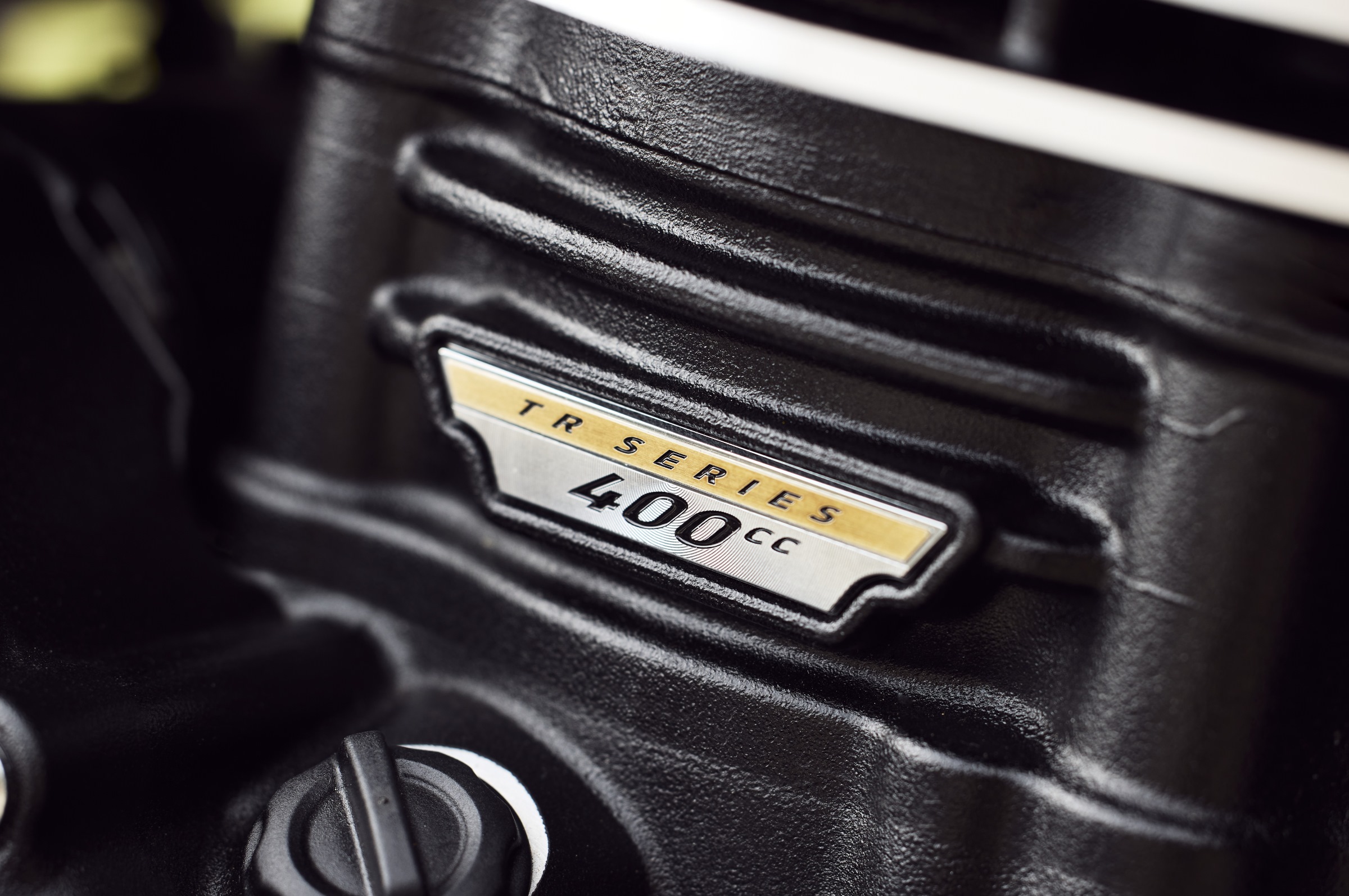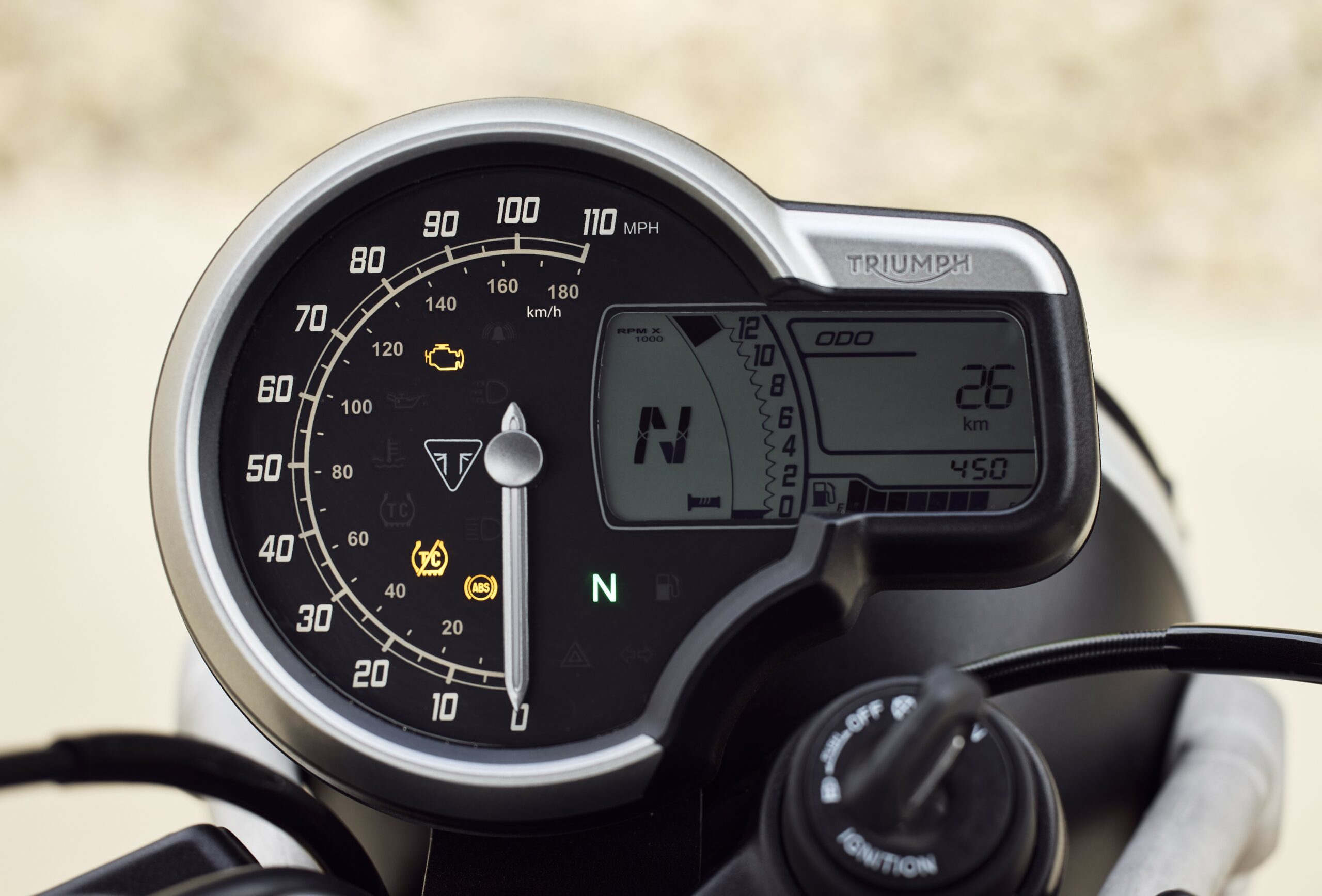Triumph’s new 400 singles are ready to duke it out in the light-middleweight market. Sized right to encourage new riders and large enough to cross the continent, they’re also priced to be tempting. Very tempting: the Speed 400 roadster starts at $4995.00, with the dirt-ready Scrambler 400 X fetching $5595.00. Others in the 400cc arena range from Suzuki’s pricey-but-proven DR-Z 400S at $7100.00 to Royal Enfield’s Scram 411 at $5099.00.

All-New Triumph 400 Motor
The Triumph 400s share a fuel-injected, liquid-cooled, 4-valve, single-cylinder 398 cc motor, the first in their new TR series. The company claims 39.5 horsepower at 8,000 rpm and 28 pound-feet of torque at 6500 rpm, sufficient for spirited riding. Triumph’s torque-assist clutch nets two points for the 400s: easier lever pull and prevention of rear-tire chirp on clutzy downshifts. A six-speed transmission fills out the power package, while a 10,000-mile service interval means less time in the shop, more time in the saddle.
Triumph 400 Classics
Triumph slots the 400s into their Modern Classic lineup—timeless machines built with today’s technology. A good example is their latest Bonneville T100, a classic made modern. The Speed 400 and Scrambler 400 X follow the path of the 2024 Scrambler 1200 X and XE we covered earlier. The Speed model, like the 1200 X, is more comfortable on the pavement, with the 400 X following in the tracks of the dirt-worthy 1200 XE. The differences are most noticeable in three areas—brakes, suspension, and rolling stock.

First off, the X has a larger, 320 mm vs 300 mm, front brake. Next, both have inverted 43 mm Big Piston forks and gas monoshocks, with the X rider enjoying 5.9 inches of travel at both ends to the Speed pilot’s 5.1/5.5-inch front/rear action. Finally, each rolls on 10-spoke cast aluminum wheels, a 19/17-inch setup carrying Metzeler Karoo Street tires on the Scrambler. The Speed’s rim are both 17-inchers and wider than the Scrambler’s to hold fatter Metzeler Sportec M9RRs. This is excellent rubber, especially given the price points of these motorcycles.

Purpose Built
Appropriate for a street machine, the Speed 400’s seat is lower and the handlebar narrower than the multi-surface 400 X. The seat heights are 31.1 and 32.3 inches, with handlebar widths of 31.3 and 32.5 inches, respectively. At 374 pounds the, the Speed 400 X is 20 pounds lighter than the Scrambler. Both carry 3.4 gallons of gas.
Triumph naturally offers a host of accessories to personalize the 400s in four general categories: Style and Comfort, Protection, and Luggage.
Wired To Ride
Triumph has more surprises in store for bikes at this price point, starting with ride-by-wire throttle control. Next are switchable ABS and traction control, followed by an immobilizer anti-theft system. And don’t forget the all-LED lighting, including small but bright turn indicators. The Scrambler’s headlight even includes a grid-design rock guard.

Triumph 400s wouldn’t be Classic without an analog speedo sitting up front. The rev counter is digital, part of a comprehensive LCD instrument display showing fuel range, gear selection, and other important ride data.

Stylin’

These are unmistakably Triumphs, from the iconic gas tank design to the triangular side case cover and black, finned engine. And you can’t miss that three-sided logo popping up here and there on the bikes. But who can blame them? The company’s rich history includes decades of competition victories, a reincarnation, and literally rising from the ashes to continue creating world-class motorcycles. Triumph is betting on these two 400s to further that reputation. I wouldn’t bet against them.

Read more: 2024 Triumph Tiger 1200
Photos courtesy of Triumph
Our No Compromise Clause: We do not accept advertorial content or allow advertising to influence our coverage, and our contributors are guaranteed editorial independence. Overland International may earn a small commission from affiliate links included in this article. We appreciate your support.


